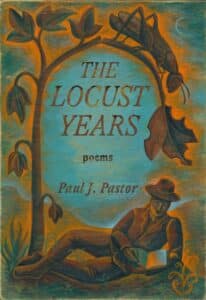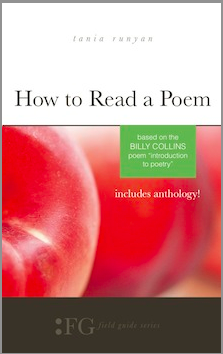
Paul Pastor writes beautiful poems from a difficult time.
The first thing I noticed with The Locust Years: Poems by Paul Pastor is that it is a physically beautiful book. The cover illustration and interior art are by Michael Cook, an artist and gallery owner who lives in Derbyshire in England. This is the kind of book I find a pleasure simply to hold in my hands. I’m attracted to books like this; books that are as much a work of art as what they contain.
The second thing I noticed, or rather learned, is that the poems were written over a four-year period that the poet says were the most difficult of his life. He doesn’t explain, except to say the poems themselves will provide the reader with few if any clues. The collection is not a memoir; it is a collection that grew from personal difficulties.

We respond to difficulties in different ways. Pastor wrote poems. Beautiful poems.
He writes about nature and animals, like moles and snails. He writes about his wife and love. He writes about faith, the pain of hope, the loss of a friend, and the stars. He writes about what he’s learning in these “locust years.” He suggests that kelp are beautiful. He sees a haunting in the woods and a gap in the hedge. And he sings a song for “late in time.”
Pastor uses language and words that are so striking you can almost taste them, smell them, and feel them between your fingers as they slip beneath your skin. All 76 poems in the collection, some rhymed and some not, share this characteristic of remarkable command and use of language. Even when he writes about silence.
Below the Glen
Let the silence get inside you. She needs
a place to nestle, with her tealing purr
you feel, but cannot hear, which umbers
louder as it sugars up your ribs.
And is that not the rumble of your need?
To drop the dulling fizz, the burdening
elocutable drone, which harries,
hammers with what you know might kill you
but to which you have resigned yourself.
No, let the silence get inside you. She is kind
and shaggy. She summons strange friends.
Her hands can teach the new and better languages.

Paul Pastor
Pastor, a poet, writer, and editor, has previously published several books, including Bower Lodge: Poems, A Kids Book About God, The Listening Day series, and The Face of the Deep. His writing has appeared in such journals and general publications as Books & Culture, The Los Angeles Review of Books, Fathom, Ekstasis, Solum Literary Press, and others. He works for Harper Collins as an executive editor for Nelson Books and lives with his family in Oregon.
It’s difficult to find sufficient superlatives to describe a poetry collection you fall in love with. But that’s what happened with The Locust Years. It takes a fine poet to create poems like these, poems that speak to the difficult times we’ve all experienced. And then to do that and set the poems within a beautifully designed and illustrated book goes far beyond the expected.
Photo by G. Yancy, Creative Commons, via Flickr. Post by Glynn Young.
How to Read a Poem uses images like the mouse, the hive, the switch (from the Billy Collins poem)—to guide readers into new ways of understanding poems. Anthology included.
“I require all our incoming poetry students—in the MFA I direct—to buy and read this book.”
—Jeanetta Calhoun Mish
- Poets and Poems: Alison Luterman and “Hard Listening” - November 4, 2025
- “On Frost and Eliot” by William Pritchard - October 30, 2025
- Poets and Poems: Patricia Clark and “Self-Portrait with a Million Dollars” - October 28, 2025

Leave a Reply